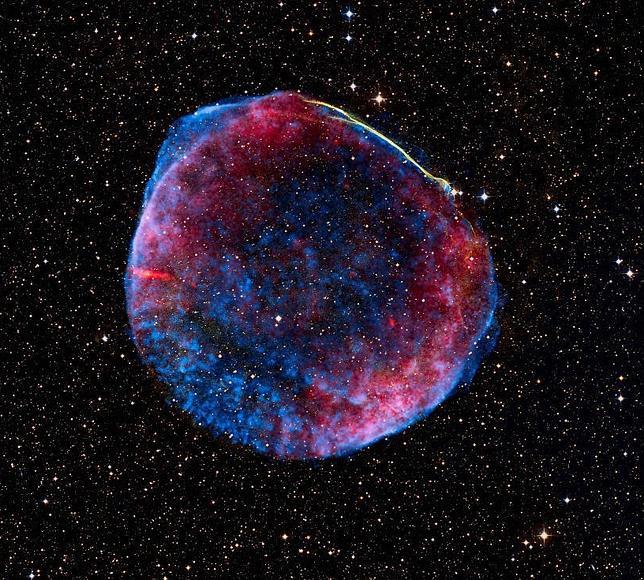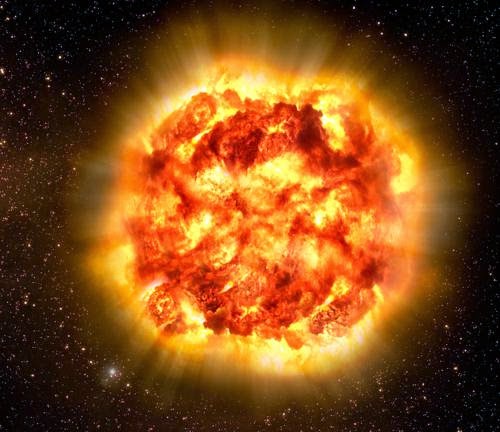The classification of the different types of supernova explosions is made on the basis of the different spectral lines (in emission or absorption) that can be observed superimposed on their continuous emission, as well as the light curves in the optic (that is, the temporal evolution of its brightness).
Type I Supernovae
These are the ones that do not show hydrogen emission lines during the evolution of their brightness. Within this type of supernovae we find three other subclasses:
Type Ia. They show a deep absorption line of silicon, specifically the SiII ($\lambda$6200Å), when its brightness is close to the maximum. Later, their spectrum becomes dominated by iron and cobalt lines.
Type Ib. They do not show the SiII line, but other lines typical of neutral helium (HEL) that do not appear, or are very weak, in Ia supernovae. Later, the emission lines of many elements of intermediate mass, such as oxygen or calcium, become very visible.
Type Ic. They do not show, neither the line of SiII, nor those of neutral helium along the evolution of their brightness. Like type Ib supernovae, these supernovae also show emission lines of intermediate mass elements over time.
In contrast to their spectra, the light curves of type I supernovae are very similar to each other.
Type II Supernovae
Type II supernovae are those that show hydrogen-specific spectral lines in their spectra. Such lines remain in the spectra for very long periods of time.
The light curves of this type of supernova reach their maximum very quickly; in times ranging from a few days to even a few hours. In addition, the light curves produced in these explosions are more varied than those corresponding to type I explosions.
Roughly speaking, we can subdivide type II supernovae precisely according to the shape of their light curves, even differentiating them into
Type II-L (II-Linear). The light curves in these cases are similar to those of type I, although the fall in brightness after the maximum is more abrupt.
Type II-P (II-Plateau). The light curves of these explosions are characterized by maintaining a very constant brightness level after the maximum, starting to fall after a plateau interval of a few months.


:quality(75)/arc-anglerfish-arc2-prod-elcomercio.s3.amazonaws.com/public/XJOZWTO7KRD45DAY7EKRRJFULI.jpg)



:quality(75)/arc-anglerfish-arc2-prod-elcomercio.s3.amazonaws.com/public/TTPTUXK7RBFAPJ2HKSUP5ROLI4.jpg)